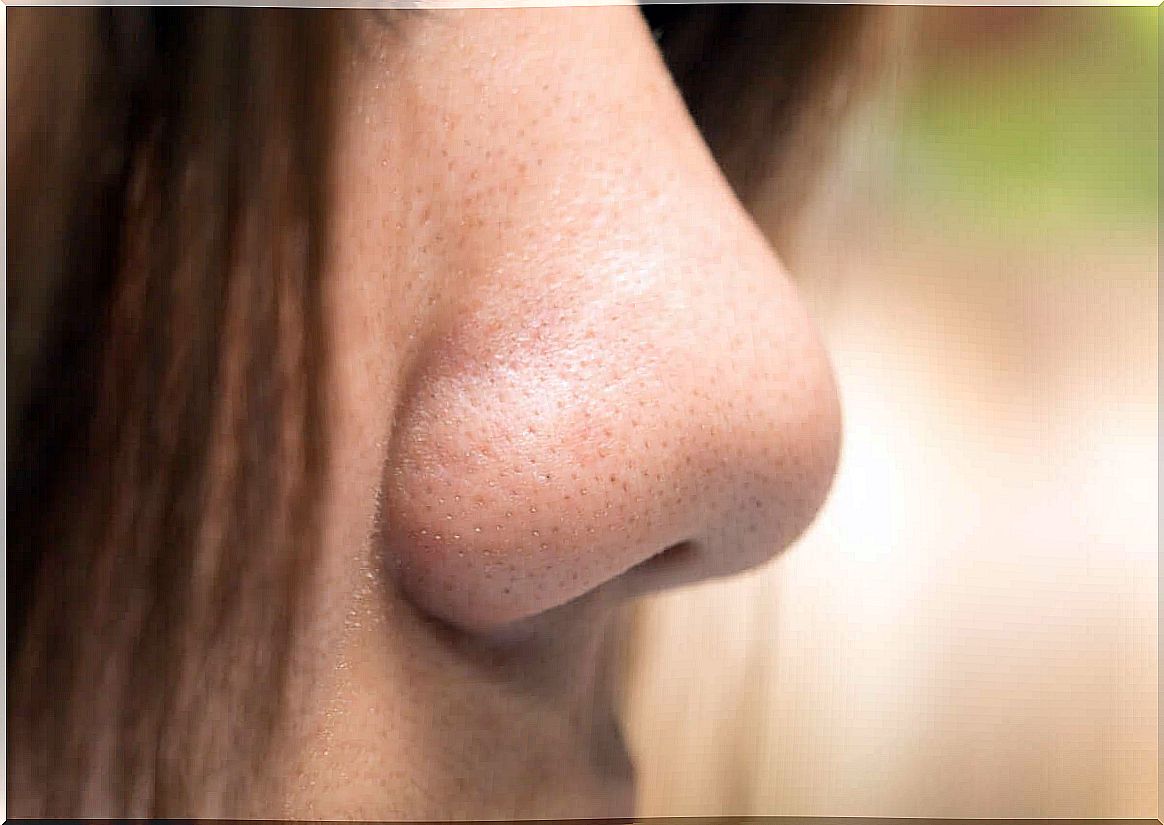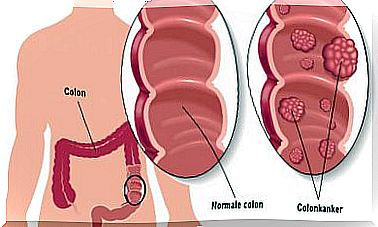Fantosmia: What Causes Olfactory Hallucinations?

Spoiled food or a smell of burnt bread. A stench of chemicals or tobacco smoke. Fantosmia is a change in smell through which we perceive smells that are not really there. In other words, olfactory stimuli that don’t exist. It is the brain that causes us to experience the appearance of olfactory hallucinations.
People who suffer from this condition are not losing their minds and they do not have a psychiatric condition. They know very well that what they are feeling is not real and that is why they are so confused.
It is important to note that this phenomenon is not that uncommon. In fact, there are many people who, after reaching a certain age, begin to experience this curious change.
These olfactory hallucinations appear around age 40 and intensify as we age. Similarly, the demographic evidence regarding its incidence tells us that it is much more common in women. We’ll take a look below.
Causes of the appearance of olfactory hallucinations

The perception of smells that do not exist can become limiting, as phantosmia is an unpleasant experience. People suddenly smell foul and unpleasant odors that permeate their daily lives. And as surprising as it may seem, 1 in 15 people over the age of 40 suffers from this phenomenon.
Studies, such as those conducted at the University of Vermont and the National Institutes of Health in Maryland, show that it is more common in women. This is especially true when they belong to more deprived environments. Similarly, it also seems to correlate with other realities that we will analyze below.
Peripheral and central phantosmia
We can distinguish two types of phantosmia: peripheral phantosmia and central phantosmia. The first appears when the origin of the change is in the nasal passages.
On the other hand, central phantosmia is a bit more complex, as it is due to a trigger in the brain. In the latter case, there is more persistence and can therefore be extremely problematic.
Xerostomia or dry mouth
Dry mouth syndrome or xerostomia commonly occurs in people between the ages of 50 and 60. It is characterized by a lack of saliva due to a change in the salivary glands.
The consequence of this dysfunction is serious, because it is accompanied by irritation of the hard and soft tissues of the mouth. It therefore increases the presence of bacteria and the risk of oral and dental diseases. Similarly, another possible associated effect is phantosmia.
Tobacco
We all know that tobacco addiction is harmful. However, sometimes we ignore the impact that cigarette dependence can have on our senses. Heavy smoking, for example, affects the senses of taste and smell.
Not only do heavy smokers lose the ability to distinguish smells and tastes. These smells and tastes also change. In other words, what we eat doesn’t taste the same and sometimes we experience foul odors without a specific stimulus. The good news is that these effects disappear when we stop smoking.
Migraine with aura
Migraines with aura have the special feature that they start with a series of symptoms that anticipate the onset of the headache. Among those signs (auras) are also visual hallucinations, such as seeing bright lights and experiencing smells that do not exist (phantosmia).
Rhinitis and Sinusitis
Rhinitis, both allergic and non-allergic, is also related to this problem. The inflammation of the mucous membrane of the nose that causes sneezing, runny nose, itching and nasal congestion leads in many cases to changing smells.
Environmental pollution
One relationship that experts have established is the association between phantosmy and environmental pollution. Those people (especially women) who live in environments with a higher degree of pollution gradually develop this olfactory disorder.
The exact mechanisms that cause the condition of olfactory hallucinations are not yet known, but it is a fact that we must take into account.
Neurological disorders
Among neurological disorders, the change of smell is a symptom common to many diseases. It is therefore always crucial to have an adequate diagnosis:
- Fantosmia can be caused by head trauma. A number of people experience olfactory hallucinations after a simple fall and blow to the head.
- Problems with smell are another symptom associated with Parkinson’s.
- It can also occur in patients suffering from schizophrenia.
How to treat phantosmia

Patients with phantosmia face many problems in the short term, such as altered appetite. A study from the University of Louisville (English link) indicates that we still do not have a timely and effective treatment to provide a solution.
It is therefore best to go to the doctor as soon as possible to find out what causes phantosmia. It could be migraines, allergies or Parkinson’s disease. It is common for the approach to be multidisciplinary and combined with the consultation of a neurologist and an ENT specialist.
Among the treatment that may be prescribed for olfactory hallucinations are anticonvulsants, antimigraine and anticonvulsant medications, as well as transcranial stimulation. The most important thing is to personalize the care of each patient and improve the quality of life as much as possible.









